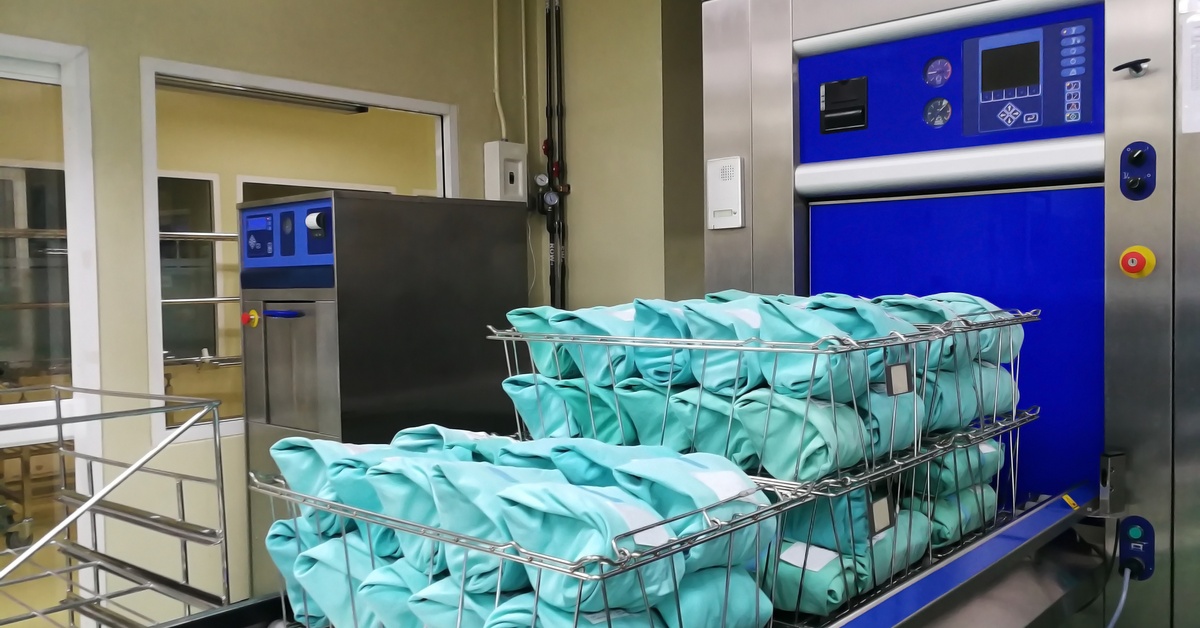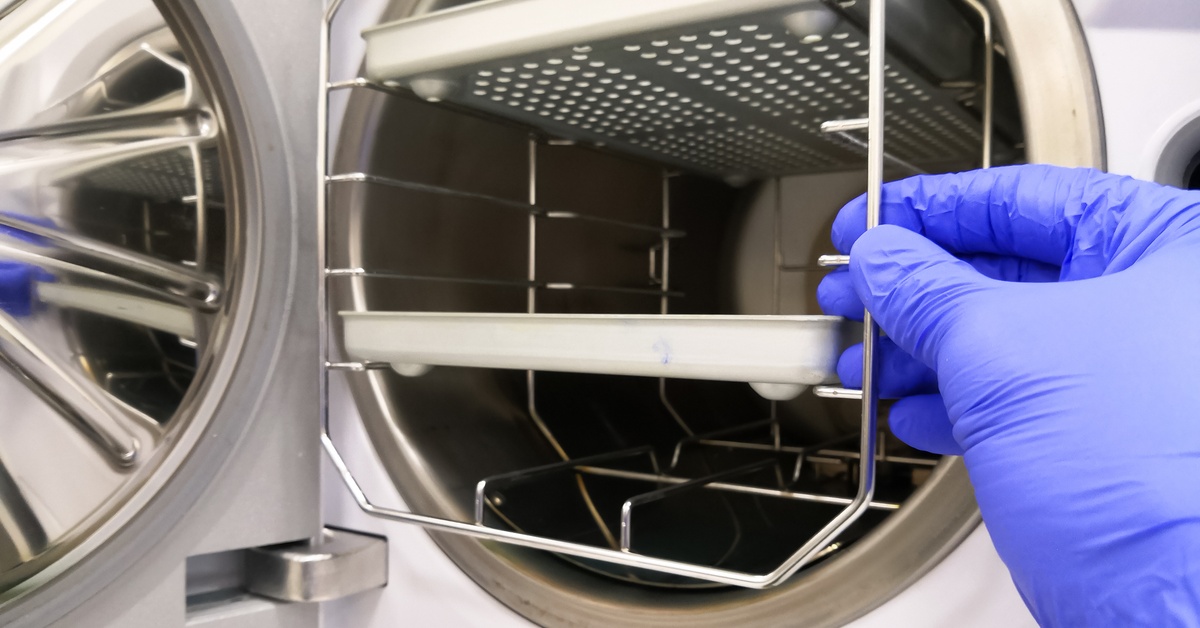Steam sterilization validation plays an essential role in bringing reusable medical devices to market. As one of the most widespread and reliable forms of medical device sterilization, steam reprocessing is vital in ensuring device efficacy and patient safety.
A thorough validation process means that reprocessing procedures for new medical devices meet stringent safety standards, eliminating harmful microorganisms and maintaining the integrity of the final product. However, this process is far from straightforward. Businesses face a variety of challenges when navigating the complexities of steam sterilization validation.
From understanding regulatory requirements to meeting technical parameters and ensuring consistent, reproducible results, the road to compliance can be daunting. This article explores key challenges in steam sterilization validation to help organizations effectively address them while maintaining quality and compliance.
An Introduction to Steam Sterilization Validation
Steam sterilization validation refers to the process of proving that a sterilization method consistently achieves the desired microbial reduction for a given product and process. It isn’t just a regulatory necessity; it’s essential for patient safety and product quality. Validation is done through detailed studies and documentation to confirm that the sterilization process works as intended under realistic production conditions.
Despite its importance, implementing effective steam sterilization validation presents many hurdles. These challenges often stem from regulatory complexity, technical limitations, product designs, and operational consistency.
Understanding Regulatory Requirements
The first challenge in steam sterilization validation is understanding and adhering to strict regulatory requirements. Different countries and industries impose varying sterilization standards, creating a maze of compliance obligations. Beyond simply knowing the guidelines, businesses must design their sterilization processes to comply with these standards without compromising on efficiency or cost-effectiveness.
Regulations dictate acceptable sterilization protocols, microbial efficacy levels, validation documentation, and many other factors. Without accurate interpretation and application of these regulations, businesses run the risk of failing inspections, product recalls, or worse, putting end-users at risk. Staying updated on changing policies and ensuring compliance cannot be a one-time effort but must be an ongoing, organized process.
At HIGHPOWER, our team knows how to navigate standards and regulations. Our sterilization validation follows key industry guidelines, including those in AAMI TIR 12, ANSI/AAMI/ISO 14937, ANSI/AAMIST81, and ANSI/AAMI/ISO 17665-1.
Defining the Sterilization Cycle Parameters
Defining sterilization cycle parameters is another significant hurdle. These parameters determine the effectiveness of the process, and any inconsistency can jeopardize the results. Understanding the importance of each parameter and how it impacts the sterilization process is crucial for achieving reliable outcomes.
Sterilization Temperature
One key parameter is sterilization temperature. It is the primary factor that determines the effectiveness of microbial eradication. High-temperature steam rapidly destroys microorganisms by denaturing their proteins.
However, precise temperature control is essential. Too low, and the process may fail to sterilize; too high, and the medical device may degrade. Establishing the specific temperature required for each product type is challenging and demands comprehensive thermal mapping during validation studies.
Exposure Time
Exposure time is equally critical. The sterilization process requires maintaining the target temperature for a specific period to achieve the required microbial kill rate. This time must be calculated based on equipment capabilities, load configuration, and product characteristics.
Shorter exposure times might compromise sterilization, while longer times may damage heat-sensitive components or materials. Balancing efficacy and product safety requires meticulous testing during validation.
Pressure and Vacuum
Sterilization pressure and vacuum control are intrinsic to ensuring effective steam penetration. Pressure allows the steam to reach all parts of the sterilizer and thoroughly cover the device. Similarly, vacuum cycles help remove air pockets that can hinder steam contact with the device. Achieving the right balance between pressure and vacuum requires a clear understanding of the equipment’s functionality to make sure that all items in the sterilizer chamber are uniformly exposed to steam.
Lingering Moisture
Managing residual moisture is another challenge in creating effective sterilization cycles. Excess moisture creates a breeding ground for lingering microorganisms, risking the lasting sterility of the device. Dry Time Validation studies must thoroughly test for and document acceptable moisture levels to ensure product compatibility and long-term functionality.
Validating Complex Product Designs
Modern products often contain complex designs and multiple materials, making sterilization validation even more intricate. Products like medical devices might include porous components, lumens, or tight crevices that steam struggles to penetrate. These design elements pose a risk of incomplete sterilization, particularly if the process parameters are not finely tuned.
Additionally, when different materials within the same product have varying tolerances to temperature and pressure, achieving sterilization without causing damage requires the utmost precision. This necessitates exhaustive testing of the product under simulated sterilization conditions. By understanding the medical device’s limitations and meeting the required microbial reduction levels, manufacturers can overcome these design-related challenges.
Contending With Biological Indicators
Selecting the right biological indicators (BIs) and interpreting results accurately is another common challenge. BIs contain highly resistant microorganisms, like Geobacillus stearothermophilus, that test the limits of the sterilization process.
Choosing a BI that accurately reflects the resistance level of the microbial load defined by the regulations and standards followed is no small feat. It must align with the sterilization method and process parameters. Additionally, validating the process to ensure these resistant microorganisms are eradicated requires precision and attention to detail. Variability in BI performance can skew validation results, further complicating the process. BI’s specifically made for validation purposes and not for routine monitoring in healthcare settings must be used during the validation.
Achieving Consistent Results
Consistency and reproducibility are critical for steam sterilization validation. A successful validation study proves only that the sterilization cycle worked under specific conditions. Maintaining the same results with various sterilization loads ensures ongoing compliance and product safety. Variations in equipment performance, operator handling, or environmental factors can all introduce inconsistencies, necessitating constant monitoring of loads using biological and chemical indicators.
Additionally, healthcare facilities often rely on robust process control systems, regular recalibration of sterilization equipment, and well-documented operating procedures. Consistency cannot be an afterthought; it must be an integral part of the sterilization process, requiring disciplined execution and timely evaluations.
Maintaining Documentation and Traceability
Detailed documentation is essential to meet regulatory requirements and maintain transparency in validation. However, managing and maintaining accurate records can be one of the key challenges in steam sterilization validation. Every step of the sterilization validation process must involve meticulous documentation, from initial cycle development to the final inspection of results.
Traceability is another critical component. Regulatory inspections often require proof of compliance, including the ability to trace results back to individual sterilization runs, equipment settings, and operators. Ensuring traceability involves robust data management systems and clear organizational procedures, but juggling these requirements alongside daily operational pressures can be a challenge for many healthcare organizations.
Navigating Sterilization Validation With HIGHPOWER
Steam sterilization validation is a complex process fraught with challenges, but overcoming these hurdles is essential to ensuring that both regulatory standards and safety expectations are met. Turn to a professional team with years of experience when you choose HIGHPOWER for your steam sterilization validation testing. Learn more about the services we offer and how we can help bring your medical device to market when you visit today.


